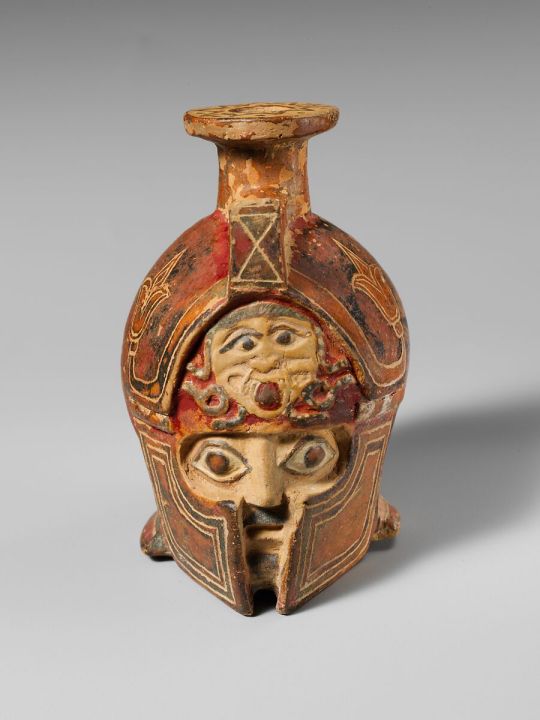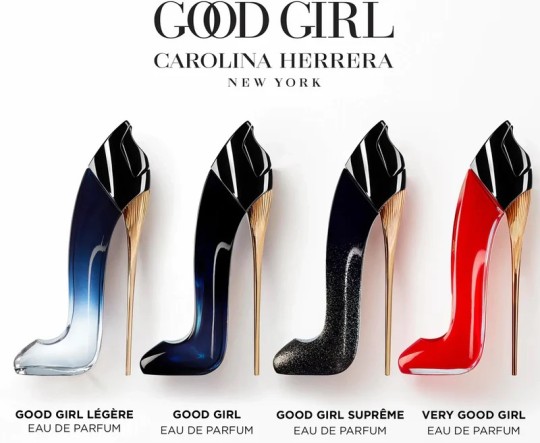#aryballos
Explore tagged Tumblr posts
Text

Ram-shaped Rhodian Aryballos
Early Archaic Greek Period, c. 650 BCE
East Greek, Rhodes, Siana Cemetery
Ceramic, paint, H 8 x L 14.5 x W 4.5 cm
On display at Penn Museum MS3494
#animals in art#european art#museum visit#ram#animal effigy#effigy vessel#Penn Museum#ancient art#Greek art#tomb art#funerary art#aryballos#ceramics#pottery
198 notes
·
View notes
Text




In the Ancient Greek world aryballos (pl. aryballoi) was a small round flask containing oil or perfume. They were usually spherical or conical, but sometimes they were in animal shapes like these here: a hare, a swan, an owl, and a hedgehog, respectively.
#ancient greeece#hellenistic culture#aryballos#aryballoi#ancient culture#hellenictics ceramics#ancient world#classical world#ceramics#terracotta#cute#ancient civilisations
81 notes
·
View notes
Text


Got to work on these badboys yesterday!
#classical archaeology#greek vase#oinochoe#aryballos#olpos#classical antiquity#classical studies#classical philology#university life#university student#uni#dark academia#light academia#chaotic academia#literature#aesthetic#dark acadamia aesthetic#books#books and libraries#poetry#art#greek archaeology#greek art#ancient greece#geometric greece
32 notes
·
View notes
Text

Corinthian terracotta oil flask (aryballos) in the form of a hare, 650-600 BCE, Orientalizing period
harvard art museums
#archaeology#artifact#history#antique#rabbit#hare#aryballos#vessel#terracotta#orientalizing period#europe#greek art#greece#corinth#mediterranean
8 notes
·
View notes
Text
Aryballos, Greece, between 520 and 510 BC

Aryballos, Grecia 520 - 510 a. C.
(English / Español)
This ancient Aryballos, a small globular flask used to store perfumes or oils in ancient Greece, offers a fascinating insight into the cultural and artistic representations of the time. Dating to between 520 and 510 BC, the artefact is now kept in the Louvre Museum and shows the faces of two women, one Greek and one Ethiopian, adorned with the Greek word 'ΚΑΑΛΟΣ', meaning 'beauty'.
The inclusion of the Ethiopian woman in the Aryballos is particularly noteworthy, as it reflects the ancient Greek literary tradition of the 'Ethiopian Tales', which described these distant lands on the edge of the known world. These tales, dating from the 8th century BC and reflected in the epic poems of Homer, recount the adventures of Greek deities and heroes, such as Menelaus, on their adventures to these mythical realms.
The juxtaposition of Greek and Ethiopian women in the Aríbalo suggests a cultural exchange and an appreciation of the diverse representations of beauty during this period in ancient Greece. It speaks to the interconnectedness of the Mediterranean world and the curiosity and engagement of the Greek people with distant cultures and civilisations.
In addition, the use of the Aríbalo in bathing ceremonies among athletes further highlights the importance of this artefact. These small flasks were commonly depicted in vase paintings, showing their integral role in the rituals and practices of ancient Greek society.
----------------------------------------------------------------------------
Este antiguo Aryballos, un pequeño frasco globular utilizado para almacenar perfumes o aceites en la antigua Grecia, ofrece una visión fascinante de las representaciones culturales y artísticas de la época. Datado entre el 520 y el 510 a. C., el artefacto se conserva actualmente en el Museo del Louvre y muestra los rostros de dos mujeres, una griega y otra etíope, adornadas con la palabra griega "ΚΑΛΟΣ", que significa "belleza".
La inclusión de la mujer etíope en el Aryballos es particularmente notable, ya que refleja la antigua tradición literaria griega de los "Cuentos de Etiopía", que describían estas tierras lejanas en los confines del mundo conocido. Estas narraciones, que datan del siglo VIII a. C. y que se reflejan en los poemas épicos de Homero, relatan las aventuras de deidades y héroes griegos, como Menelao, en sus aventuras hacia estos reinos míticos.
La yuxtaposición de mujeres griegas y etíopes en el Aríbalo sugiere un intercambio cultural y una apreciación de las diversas representaciones de la belleza durante este período en la antigua Grecia. Habla de la interconexión del mundo mediterráneo y de la curiosidad y el compromiso del pueblo griego con culturas y civilizaciones distantes.
Además, el uso del Aríbalo en ceremonias de baño entre atletas resalta aún más la importancia de este artefacto. Estos pequeños frascos se representaban comúnmente en pinturas de jarrones, mostrando su papel integral en los rituales y prácticas de la sociedad griega antigua.
5 notes
·
View notes
Photo

Perfume bottles.
Kamiros, Rhodes, Greece, ca 550BCE
[I think they’re all from the same place, it’s hard to work out from the BM website]
(via aryballos | British Museum)
35 notes
·
View notes
Text




Another piece is done and I love this little guy!
This is an “early aryballos” (according to the book I’ve been using for reference) that I painted Athena’s owl on! I think it came out super cute 🥰
This piece is primarily wheel thrown with the handle being hand built. For the rim I just threw a tiny ring on the wheel and attached it by hand for the sake of my own sanity.
This piece is made with the same engobe and Amaco glaze combo as the others.
Bonus: New group picture!

#art#artist#epic the musical#greek mythology#tagamemnon#ceramics#red figure pottery designs#red figure pottery#aryballos#wheel throwing#my art tag#artists on tumblr#athena goddess of wisdom#athena
36 notes
·
View notes
Text

"Terracotta Aryballos (Perfume Vase) in the form of a sandaled right foot", Rhodian, Mid-Sixth Century BCE
Getting a Footing
I figured that for my first post I might as well address that yes, my icon is a foot. Well, it's not a foot in a "c'est n'est pas une pipe" kind of way. This beautiful object is a 6th-century BCE Aryballos, a specific type of Greek vase for holding oils, mostly perfumes, from the island of Rhodes. These vases come in all sorts of shapes and sizes, depicting scenes, animals, geometric patterns, or even, human figures.
The sandaled foot caught my attention the first time I ever visited the Met Museum. With my background being in Costume Design, my first immediate thought was "This is fantastic costume research". Very rarely do you get a three-dimensional depiction of clothing from ancient times in such considerably great shape. What I also found interesting is that this is not the only foot-shaped Aryballos in the Met's Collection, there was another, different in design, but also was an excellent depiction of Ancient Greek footwear. It reminded me of modern examples of foot-wear-shaped perfume bottles such as Carolina Herrera's Good Girl collection, pictured below, a parallel that greatly entertains me. Finding those commonalities with the ancients is one of the things I love most about archaeology and it poses the idea that maybe the ancient Greeks weren't unlike ourselves.
I was doing some reading on Ancient Greek perfumes in preparation for this post and came across an article by the Museum of Perfume Paris in which the author shares the story of Phaon, an old, ugly sailor, who was gifted a scented ointment by the goddess Aphrodite. This ointment when applied made Phaon young and beautiful, and any woman who saw him fell in love with him. Phaon's story is an interesting explanation of the romantic powers of perfume in Greek mythology, but it wasn't the only one. In the Illiad, song XIV, Helen applies perfume with the hopes of winning back her husband after the events of the Trojan War. It made me wonder if this Aryballos could have been a gift between lovers. Maybe as a way to remember their love or memorialize the beauty of their betrothed. Many Aryballos in the Met and others' collections are shaped like the helmeted heads of warriors, perhaps gifts for their loved ones as they went off to war.
It is important to note that perfumed oils were used by both men and women, and for a variety of occasions including religious ceremonies, weddings, funerals, and even athletic competitions. With that in mind, Aryballoi, in general, certainly uphold and project typical Ancient Greek values, such as class, gender, faith, and bravery, but I am curious as to the specific story behind the sandaled foot. Was it simply a display of socioeconomic status? Or perhaps it once stood as a reminder of love and admiration (The romantic in me likes to imagine so). I will leave you with these thoughts and I am interested to hear your own opinions.


Other Aryballoi in the Met's Collection. Left: Helmeted Soldier Aryballos, Right: Sandaled Foot Aryballos

Carolina Herrera's Good Girl Collection, Footwear Inspired Packaging
Read more about Greek Aryballoi and Ancient Perfumery below:
"Divine Scents in Ancient Greece" by Isabelle Bardiès, Musee du Parfum
"Perfumery from Myth to Antiquity" by Dimitra Voudouri & Christine Tesseromatis, International Journal of Medicine and Pharmacy
"The Greek Sense of Smell: Olfactory Perception and the Sociocultural Roles of Perfume in Antiquity" by Grainne Louise Grant, University of Exeter
#history#archeology#ancient greece#aryballos#perfume#ceramics#classical antiquity#greek history#ancient history#classical archaeology#greek mythology#humanitarianhistory
2 notes
·
View notes
Text
Greek Pottery: Soldier-Head Aryballos (E. Greek, 600-575BCE)

View On WordPress
10 notes
·
View notes
Text

Aryballos - Greece, 6th century B.C.E.
3 notes
·
View notes
Text

Oil flask (aryballos) in the form of a seated monkey
, c. 560 BCE
Terracotta, 9.5 x 5.1 cm (3 3/4 x 2 in.)
on display at Harvard Art Museums 1960.290
“In the 6th century BCE, workshops in…the multicultural contact zone…produced an array of faience flasks combining Egyptian & Greek elements [and] motifs….Whimsical monkey-shaped containers were popular in Italy.”
#animals in art#museum visit#ancient art#monkey#effigy vessel#animal effigy#primates#Etrusco-Corinthian#Etruscan#flask#aryballos#ceramics#terracotta#Harvard Art Museums
21 notes
·
View notes
Text

Roman Glass Aryballos (oil bottle) 1st–3rd century CE
Blown glass. Dimensions: H.: 2 1/16 in. (5.2 cm).
#Roman Glass Aryballos#1st–3rd century CE#glass#ancient glass#ancient artifacts#archeology#archeolgst#history#history news#ancient history#ancient culture#ancient civilizations#ancient rome#roman history#roman empire#roman art
113 notes
·
View notes
Text

tag urself
#which krater are you#my 4“11 self is probably aryballos lets be real#greek mythology#greek mythology memes
4 notes
·
View notes
Photo

Faience aryballos (oil flask) in the form of a hedgehog, 6th century BCE
32 notes
·
View notes
Text


Cosmetic or perfume jar (aryballos) in the form of a hedghog, Egypt, 6th-5th century BC
from The Walters Art Museum
449 notes
·
View notes
Text


huge fan of this aryballos dating from c.670 BC (roughly a century after we believe the greeks adapted the phoenician writing system for their own use) that basically says "if you touch my shit i hope your eyeballs explode"
580 notes
·
View notes